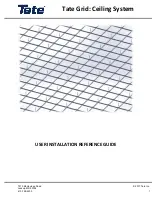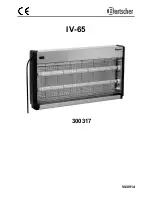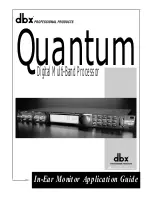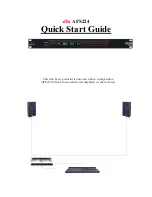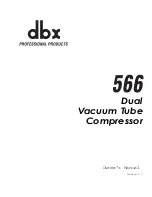
SI800M
Document 800-09383 Rev. B - Page 2 –
Honeywell Security & Communications – 1198, Avenue du Docteur Maurice Donat – BP1219 – 06254 MOUGINS CEDEX - Tel.: +33 (0)4 92 94 29 50 - Fax: +33 (0)4 92 94 29 60 -
www.honeywell.com
Les déclarations de conformité aux exigences essentielles du marquage CE pour ce produit sont disponibles sur notre site :
http://www.honeywell.com/security/emea/hscdownload
To obtain applicable CE compliance Declaration of Conformity, please refer to our website :
http://www.honeywell.com/security/emea/hscdownload
E
E
N
N
R
R
E
E
G
G
I
I
S
S
T
T
R
R
E
E
M
M
E
E
N
N
T
T
La liaison Centrale/Sirène étant bidirectionnelle, il est obligatoire d’enregistrer les
SI800M à leur emplacement définitif avec un minimum de réception de 4/10, pour
s’assurer de son bon fonctionnement et d’une portée radio correcte.
1.
Connectez l’outil de configuration et entrez en programmation.
2.
Choisissez la rubrique « ENREGISTREMENT»
3.
Appuyez sur le bouton « INIT » (1). La phase d’initialisation matérialisée
par des bips dure jusqu’à 30 secondes selon le protocole utilisé
(autoprotection ouverte).
4.
Lorsque la sirène est enregistrée, les bips sonores s’arrêtent et elle émet
un signal 2 tons. Sur l’afficheur de l’outil de programmation est indiquée
l’identification de la sirène avec le niveau radio reçu.
5.
Tapez sur la touche QUIT pour sortir du mode programmation.
IMPORTANT : la sirène doit toujours être enregistrée à son
emplacement définitif avec un minimum de réception de 4/10
C
C
H
H
A
A
N
N
G
G
E
E
M
M
E
E
N
N
T
T
D
D
E
E
S
S
P
P
I
I
L
L
E
E
S
S
1.
Ouvrez le capot de la sirène, le déclenchement de l’autoprotection la fait
sonner pour la durée programmée lors de sa configuration. Retirer les piles
(à jeter dans les containers prévus à cet effet).
2.
Insérez les nouvelles piles lithium 3V de type CR123 (en respectant les
polarités).
3.
Replacez le collier de maintient des piles
4.
Appuyez sur le bouton « INIT » (1). La sirène émet des bips puis un signal
2 tons signalant qu’elle est de nouveau en service.
5.
Remontez le capot, en vissant la vis. La sirène est prête à fonctionner au
bout de 10 secondes.
Note : En Alpha, avant de procéder au remplacement des piles, mettre la
centrale en mode programmation afin d’éviter le déclenchement de la sirène
au moment de l’ouverture du capot.
ATTENTION : Il y a danger d'explosion s'il y a remplacement incorrect de la
pile. Remplacer uniquement avec une pile du même type ou d'un type
équivalent recommandé par le constructeur. Mettre au rebut les piles usagées
conformément aux instructions du fabricant.
C
C
A
A
R
R
A
A
C
C
T
T
E
E
R
R
I
I
S
S
T
T
I
I
Q
Q
U
U
E
E
S
S
Techniques
Alimentation
3 piles 3v type CR 123
Autonomie
5 ans typique (selon la configuration de l’installation)
Autoprotection
A l’ouverture et arrachement
Puissance
Moyenne dans l'espace: 104 dBA - 112 dBA (+/-3dB) dans l'axe
Température De
fonctionnement : -10° à 55°C.
Température de
stockage : -20° à +70°C.
Diamètre 165mm
Poids 485g.
Couleur Blanc
Radio
Type
FM bande étroite :
Fréquence 868.85 MHz (Alpha protocole), 868.25 (V2 protocole)
Portée radio
2000m en champ libre.
Supervision Oui
Conformité
Organismes de certification :
- CNPP Département Certification (
www.cnpp.com
)
- AFNOR Certification (
www.afnor.org
)
Référentiel de certification : NF324-H58
EN50131-1, EN50131-4 et RTC50131-4. Grade 2, classe environnementale II.
Numéro de certificat: 3120000191.
R
R
E
E
C
C
O
O
R
R
D
D
I
I
N
N
G
G
The Control Panel / Sounder link being bi-directional, the SI800M sounders must
always be registered in their final location with a minimum radio level of 4/10, to
ensure correct operation.
1.
Using the programming tool, enter the programming sounder menu.
2.
Select “REC” (or “DELETE” if applicable). The message “PRESS INIT
BUTTON” is displayed on the screen.
3.
Press the “Init Button” (see
Figure 1
) on the sounder. The initialisation phase
is confirmed by beeps up to 30 seconds, depending on the protocol used
(tamper opened).
4.
When recording is completed the sounder stops beeping and sends a 2-tone
signal. The sounder identification is displayed on the programming tool
together with the received radio signal strength.
5.
Press “Quit” to leave the programming mode.
IMPORTANT: The detector must always be recorded in its final location
with a radio level of at least 4/10 units
R
R
E
E
P
P
L
L
A
A
C
C
I
I
N
N
G
G
T
T
H
H
E
E
B
B
A
A
T
T
T
T
E
E
R
R
I
I
E
E
S
S
1.
Remove the sounder cover. Its tamper contact triggers sounding for a period
of time defined during the installation. Dispose of the batteries in a special
container.
2.
Replace with the new lithium batteries 3V type CR123 (respecting polarities).
3.
Secure the batteries with the plastic collar.
4.
Press “Init Button” (see
Figure 1
). The sounder emits a series of beeps then
a 2-tone signal confirming it is once again in service.
5.
Secure the cover using the screw. The sounder is ready to operate after 10
seconds.
Note: In Alpha, enter panel programming mode before removing
batteries to prevent the siren to sound after the removal of the cover.
WARNING: There is a risk of explosion if the wrong batteries are used. Replace
only with the same type or with an equivalent type which has been recommended
by the manufacturer. Dispose of the used batteries in accordance with the
manufacturer’s instructions.
S
S
P
P
E
E
C
C
I
I
F
F
I
I
C
C
A
A
T
T
I
I
O
O
N
N
S
S
Technical
Power supply
3 batteries 3v type CR 123
Battery life
5 years typical (depending on system configuration)
Tamper
opening and wrenching-off
Sound power
Means acoustic level: 104 dBA - 112 dBA (+/-3dB) measured in the axis
Temperature
Operating : -10° to 55°C (14°F to 131°F)
Temperature
Storage : -20° to +70°C (-4°F to 158°F)
Diameter
6.50 "
Weight
485g.
Color
White
Radio
Type
FM narrow range :
Frequency
868.85 MHz (Alpha protocol), 868.25 (V2 protocol)
Radio range
2000m open field
Supervision
Yes
Standards
Certifying authorities :
- CNPP Département Certification (
www.cnpp.com
)
- AFNOR Certification (
www.afnor.org
)
Reference for certification : NF324-H58
EN50131-1, EN50131-4 and RTC50131-4. Grade 2, environmental class II
Certificate No: 3120000191.
N° de série de l’appareil / serial number
Cause du retou
r
/ reason for return
Défaut constaté / fault noticed
Description du défaut / Fault description
Installateur / Installer
Effraction
--------------
Intrusion
A
l’installation
------
During installation
---
date
Rénovation
------------
Cosmetic
repair
Sur
intervention
---
On
intervention
------
date
Panne
-------------------
Fault
Défaut
aléatoire
----
Random
fault
A compléter et à joindre au produit lors de son retour en SAV. Tout
produit retourné sans cette fiche entraînera son diagnostic complet
et, en conséquence, une facturation forfaitaire pour la prestation de
remise en état.
Complete and return together with the faulty product. Any product received
without a « Repair Sheet » will result in a full process diagnosis, repair and test,
and a fixed price repair will be charged.
F
F
I
I
C
C
H
H
E
E
D
D
E
E
R
R
E
E
T
T
O
O
U
U
R
R
S
S
A
A
V
V
–
–
R
R
E
E
P
P
A
A
I
I
R
R
S
S
H
H
E
E
E
E
T
T





